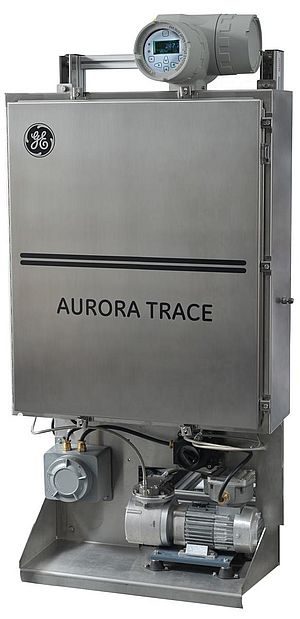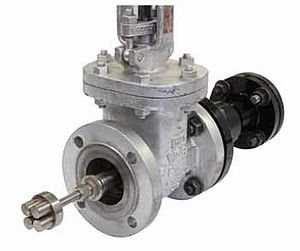MAINTENANCE STRATEGIES OPTIONS
Determining the correct assets maintenance strategy is hard for plant managers, and reliability and maintenance engineers in Oil and Gas plants. The cost and effectiveness need to be carefully considered.
The focus is on how to address asset failures; when companies are reacting to failure without warning, the consequences and risks involve spare parts provisioning, limited planning time, overtime and poorer execution with no time for documenting and embedding lessons learned. This approach is not only more costly, but also does not enable improving processes and practices.
Machines in refineries or petrochemical plants may require a combination of different maintenance strategies based on failure modes and criticality, to optimize their life cycle costs.
Different technologies can detect failures early in their progression. A P-F curve (Figure 1) represents with P the time when a specific potential failure can be detected and F when the asset reaches functional failure. Technologies for identification of failures at early stage can be applied to enable proactive decisions, managing assets at the top of this curve. But there may be cases where a different approach is appropriate.
Reactive maintenance (RM)
RM, "living life at the bottom of the P-F curve", involves daily maintenance activities driven by unanticipated problems from machines breaking down without indication of imminent failure. Run-to-failure is rational when the consequence of failure, in term of operational risks and cost to replace, is so low that it makes sense to allow the asset to fail instead of spending value time implementing predictive actions. RM can be the most expensive and least effective strategy when indiscriminately applied to all assets.
Preventive Maintenance (PM)
PM is performed on time-based intervals derived from manufacturer's recommendations based on historical failure time cycles. PM also includes intrusive periodic inspections, taking the asset out of service to look for worn parts or incipient failures. Often, parts may be replaced even though they do not show wear, potentially imparting maintenance-induced failures. Since failures can occur between scheduled maintenance intervals, a strictly time-based strategy may not be right for failure patterns not related only to aging. Same for periodic non-intrusive inspections, as they require machine stop, they can result in production loss and added wear due to the start/stop cycles required.
Predictive Maintenance (PdM)
The goal of PdM is to use Condition Monitoring (CM) technology to identify incipient failures through the evaluation of early warning indicators. PM routines can be optimized or eliminated with a robust PdM program. An initial investment is required for state-of-the-art technology for Condition Monitoring; however, PdM enables early detection and identification of failures, with the following benefits over previously described approaches:
- Enable maintenance work plans generation
- Reduced downtime and prevention of secondary damages
- Reduced recurring maintenance costs
Condition-Based Maintenance (CBM)
CBM evaluates machinery condition via instrumentation, (periodically or continuously), through a Condition Monitoring program. In this way maintenance is scheduled when it is most cost-effective and it helps quantify the work required.CM programs are often characterized by "vibration monitoring", but many types of non-intrusive CM technologies are also implemented (eg. lubricant analysis, thermography, ultrasonics). Failure modes and criticality drive the determination of methods to be used and the frequency data needs to be collected and analyzed on an asset-by-asset basis. For example, lower criticality equipment can be monitored with scanning systems (wired or wireless) or portable data collection systems.
Proactive-Centered Maintenance (PCM)
Among PCM's objectives is not only defining where to apply RM, PM, and PdM to maximize effectiveness, but it also focuses on procedures, processes, and designs in order to limit or prevent recurring asset failures, thus reducing the total failures and extending the mean time between failures. Proactive approach uses data from Root Cause Failure Analysis, PdM routines, CM systems, and operations feedback to keep assets in their optimal operating condition. A PCM approach can result in further maintenance costs savings.
COSTS AND PRIORITIES
Companies who do not have good CM and PdM programs tend to react to failures and "fight fires", preventing the transition to a more proactive approach to managing assets. The yearly cost for the maintenance strategies per unit of power produced demonstrates that PdM and PCM are less costly than other strategies.Best maintenance and reliability teams manage the majority of assets as far up the P-F curve (Fig.1) as possible. They spend the right amount of time identifying failures earlier, enabling better coordination of plans and schedule activities. Challenging economic environment, with the costs of HSE (Health Safety Environment) and regulatory compliance, makes it an imperative to optimize the return on investment for such activities. Plant machinery where failures can occur rapidly and have significant impact to the plant's EHS and production and can also cause high repair costs or product quality issues is considered highly critical. A continuous, on-line condition-monitoring program should be implemented to protect the machine and to predict failures.
Case example - Turbine material loss
Condition Monitoring proved instrumental in diagnosing a critical issue in January 2015 at an oil producer site, preventing unplanned downtime and loss of production. A vibration alarm was raised on one of the steam- turbine driven boiler feed water pumps. Multiple restarts were attempted, with a high bearing vibration alarm tripped each time. To find the root cause, data acquired by the online monitoring platform were analyzed; it was observed bearing vibration levels on all radial vibration probes suddenly increased within milliseconds. Data showed that there was no abnormal vibration before the initial incident. Based on that, the diagnostic team was able to determine that there had been a sudden material loss from the turbine. An inspection was recommended.The rotor inspection revealed material loss-the turbine had lost two rotor blades and broken the shroud. The blades and shroud were repaired.By repairing the turbine before additional damage occurred, the user avoided long unplanned downtime and loss of production. The availability of reliable data provided a solution with an accurate and quick diagnosis and savings of over $75,000 USD.
CONCLUSIONS
Best in class performers in industry use more Predictive Maintenance programs, as a function of the criticality of the machines. Predictive approaches leverage Condition Monitoring, for rapid diagnosis, ability to isolate root cause through analysis of reliable data. This enables timely and informed decisions to avoid unplanned downtime and loss of production and reduce failure severity. Managing assets as far up the P-F curve (Fig.1) as possible enables maintenance and reliability teams to better coordinate activities with all consequent benefits in terms of safety, compliance and cost.
Ref: Vol .29 No.1 2009 ORBIT Magazine; Larry Covino, Michael Hanifan, Asset Management 101




















